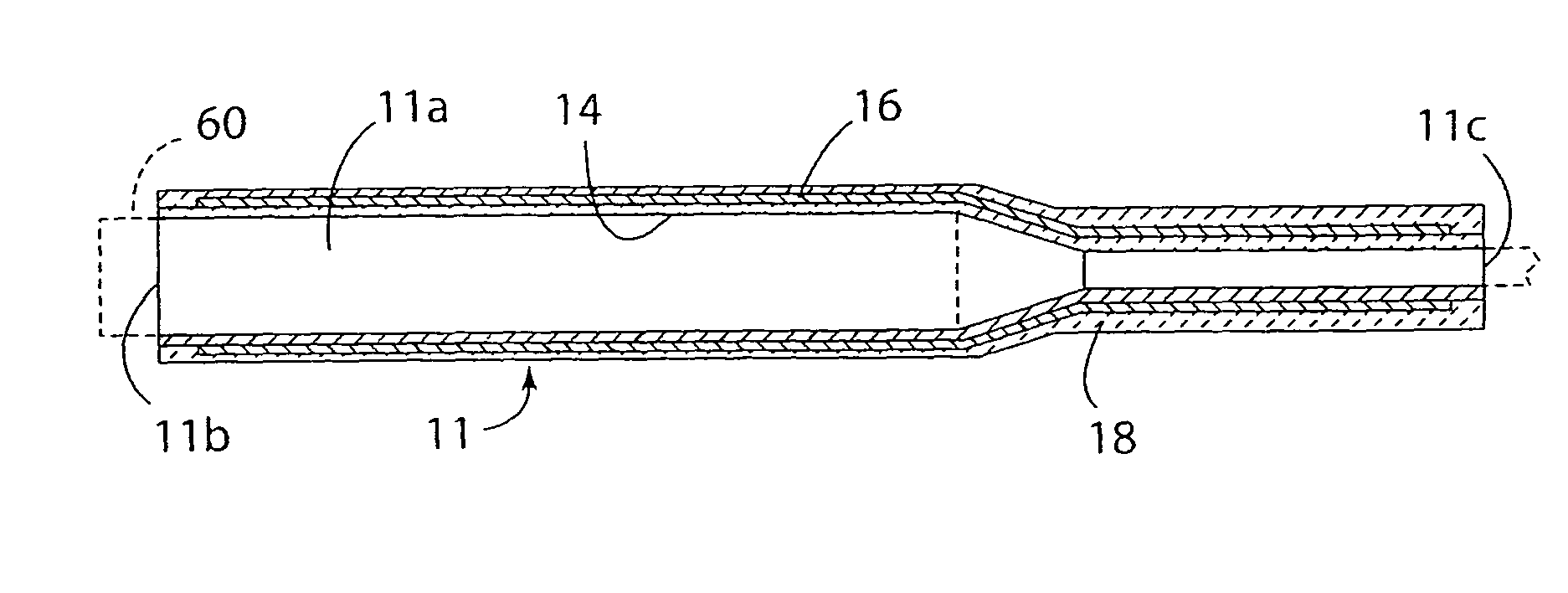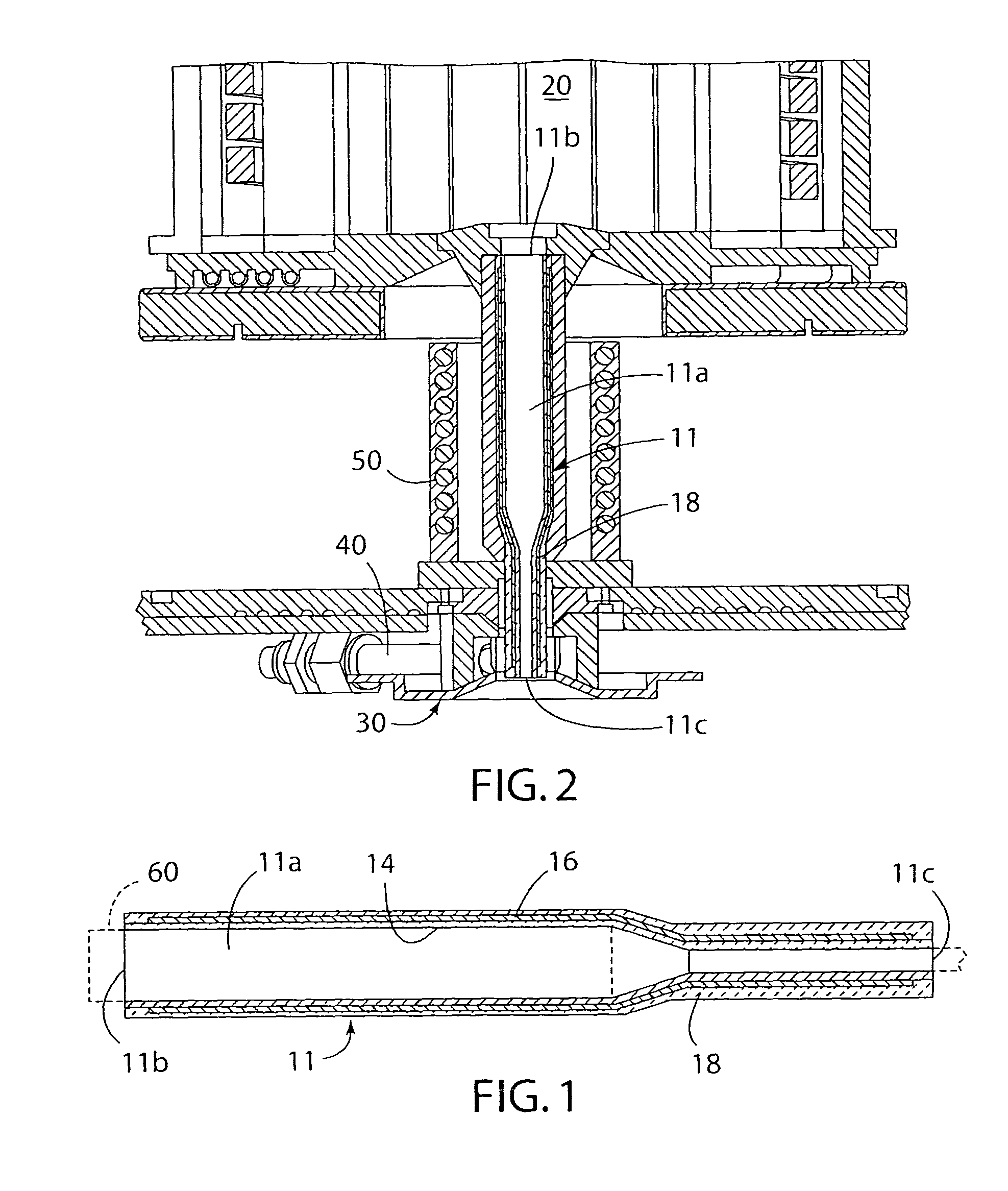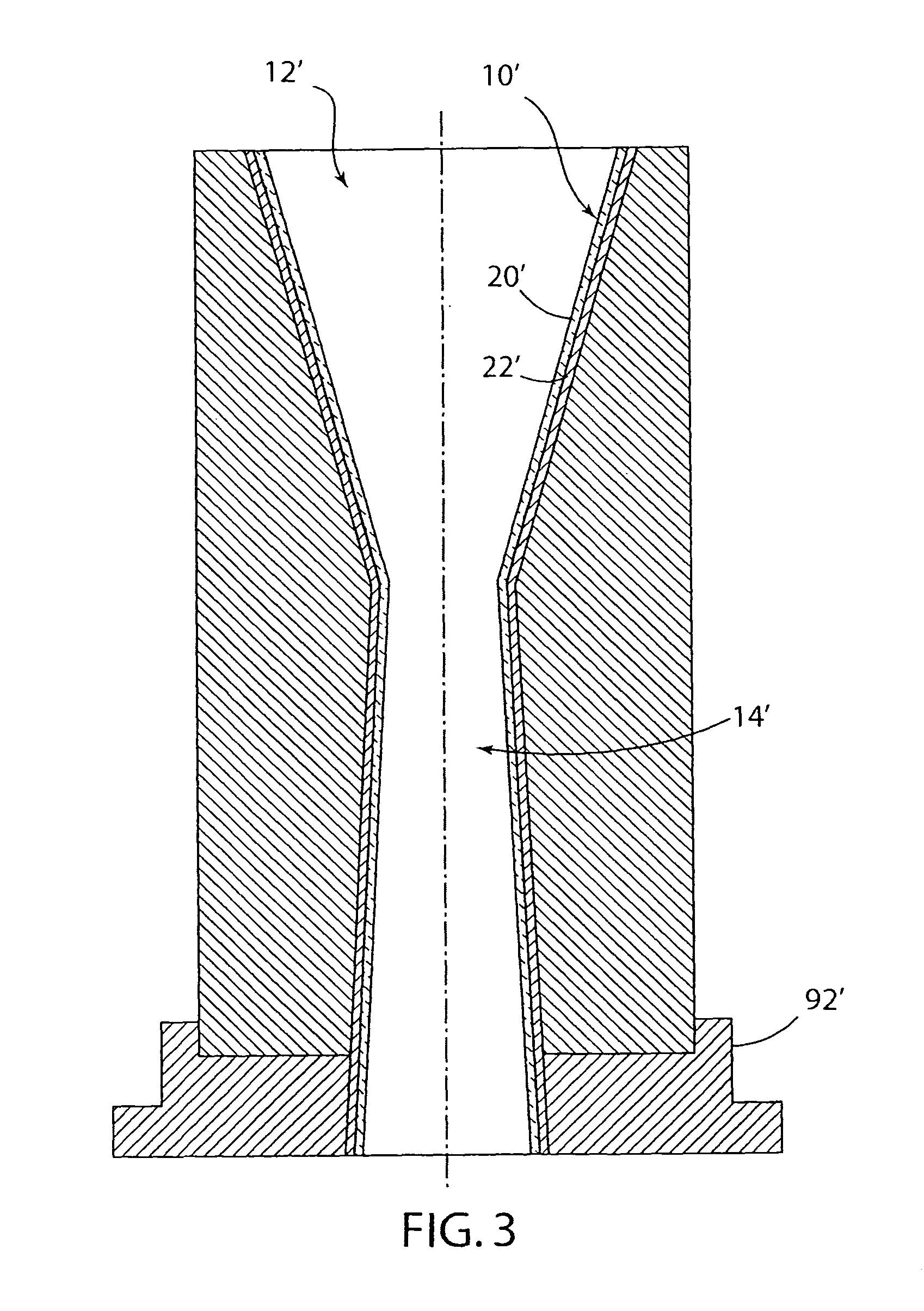Melt containment member
- Summary
- Abstract
- Description
- Claims
- Application Information
AI Technical Summary
Benefits of technology
Problems solved by technology
Method used
Image
Examples
example # 1
Example #1
[0037]High purity yttria powder with a size −6 torr and heated to 1800° C. for 16 hours to transform then to sub-stoichiometric yttria.
[0038]One of the crucibles was then placed in a furnace at 1200° C. for approximately 10 minutes to revert it back to stoichiometric yttria.
[0039]Small samples of high purity titanium were placed into the yttria crucibles and were placed inside a tantalum can sheathed with pyrrolitic graphite. The can was placed in a high vacuum to 1×10−6 torr before backfilling to a sub-atmospheric pressure of ultra high purity argon. The furnace was ramped up to 1800° C. (i.e., approximately 140° C. above the melting temperature of titanium) and held for 15 minutes before cooling. The titanium melted in the yttria crucibles and re-solidified upon cooling.
[0040]Examination was conducted by cross-sectioning the stoichiometric and sub-stoichiometric crucibles with a diamond saw. Upon sectioning, the re-solidified titanium in the sub-stoichiometric yttria cru...
example # 2
Example #2
[0041]A pour tube fabricated with a stoichiometric yttria melt contacting layer was fabricated as described by U.S. Pat. No. 6,358,466. The pour tube was installed in a cold wall crucible atomization system located at the University of Birmingham in the United Kingdom. Molten Ti-6Al-4V (wt %) was melted in the cold wall crucible. An electromagnetic field around the pour tube was generated with an induction power supply and was tapped by the thermal radiation generated by the heat-generating layer and was directed to the interior cavity of the pour tube. The molten titanium alloy flowed through the pour tube, free fell for approximately two seconds, and was subsequently contained in a mild steel can lined with boron nitride. The molten Ti-6Al-4V had a melt exit temperature of 1675° C. and was flowed for a duration of 45 seconds.
[0042]Post-experiment analysis of the pour tube was conducted by cross-sectioning the pour tube perpendicular to the melt flow direction. The cross-...
PUM
| Property | Measurement | Unit |
|---|---|---|
| Metallic bond | aaaaa | aaaaa |
| Melt temperature | aaaaa | aaaaa |
Abstract
Description
Claims
Application Information
 Login to View More
Login to View More - R&D
- Intellectual Property
- Life Sciences
- Materials
- Tech Scout
- Unparalleled Data Quality
- Higher Quality Content
- 60% Fewer Hallucinations
Browse by: Latest US Patents, China's latest patents, Technical Efficacy Thesaurus, Application Domain, Technology Topic, Popular Technical Reports.
© 2025 PatSnap. All rights reserved.Legal|Privacy policy|Modern Slavery Act Transparency Statement|Sitemap|About US| Contact US: help@patsnap.com



